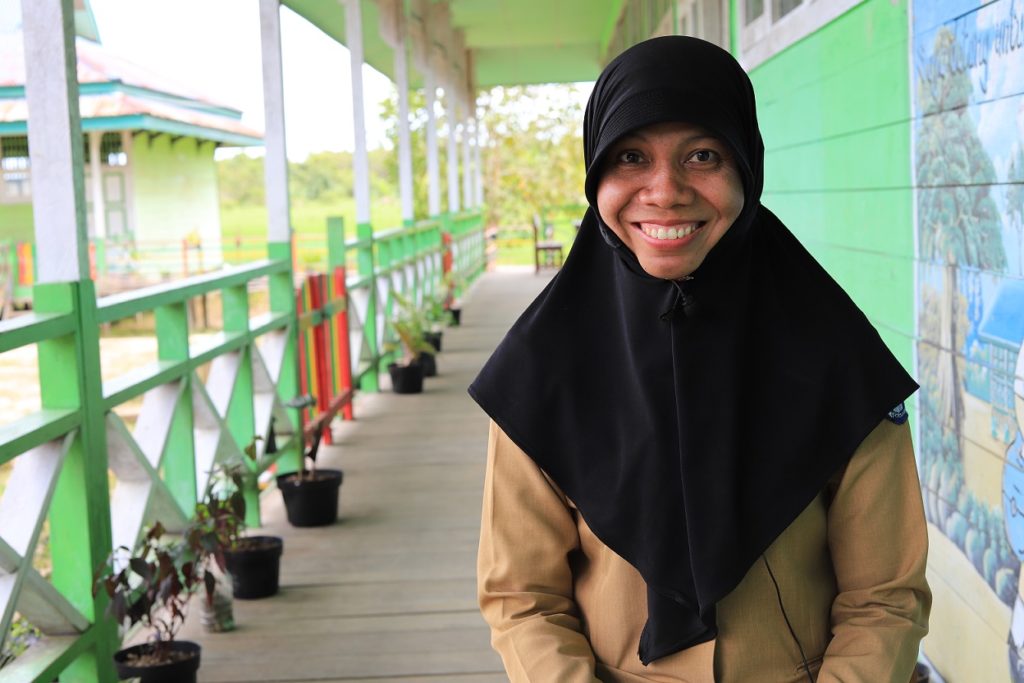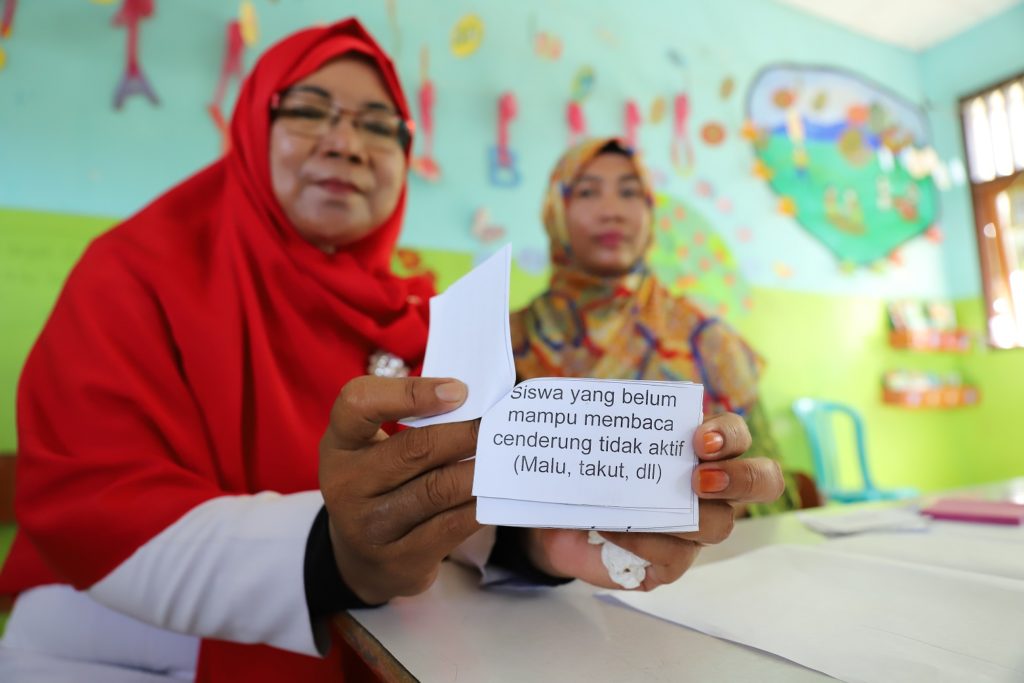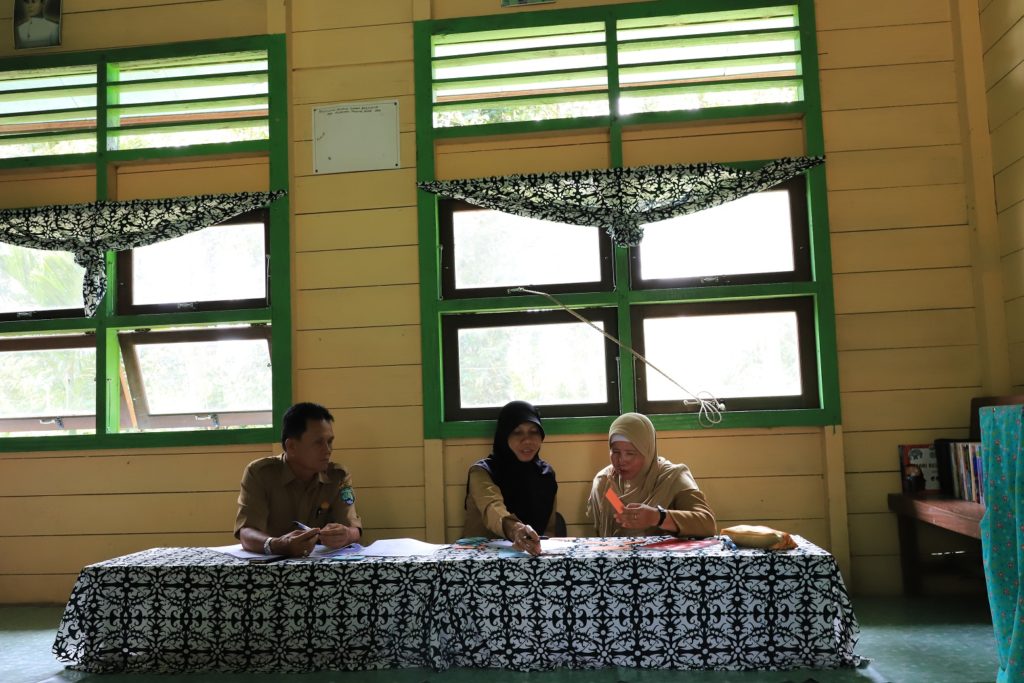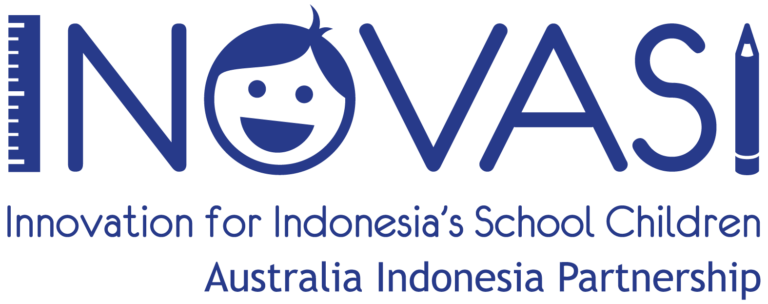
INOVASI activities in North Kalimantan are focused on literacy in the early grades. Results from Indonesia’s National Assessment Programme (INAP) show that the average literacy score for North Kalimantan is two points lower than the national average score (RPSA Kaltara 2017). In survey activities conducted by INOVASI in 2017, it was found that only 14,59 percent of 1st grade students and 60,94 percent of 2nd grade students can read. Even for those who can read, not all can integrate information and find explicit information from the text.
Warsiyah is the principal of SD Negeri 013 Bulu Perindu in Bulungan, North Kalimantan. This primary school is the only school in Desa Bulu Perindu, an area in Tanjung Selor separated from other villages by the Kaya River. In addition to her role as school principal, Warsiyah also works with INOVASI as a local education facilitator.
Together with 19 other local facilitators, she is learning new methods and tools for exploring learning problems at the classroom and school level. During INOVASI workshops and training, Warsiyah has worked to uncover the root causes of literacy and learning problems for early grade students. Thanks to her training, she has been able to use the phrase card sorting method, sorting issues into the five hows and five whys.

This bottom up approach helping Warsiyah to better explore local learning challenges is called Problem Driven Iterative Adaptation (PDIA), and is a core part of INOVASI pilot planning and co-design. The approach sees INOVASI working and learning directly with local partners to explore and identify local problems and co-design locally relevant solutions. This way of thinking is certainly not new – conceptually it draws on approaches in the Doing Development Differently and Human Centred Design fields – but INOVASI continues to implement and iterate its own version of this on the ground in Indonesia.
As part of exploration activities, Warsiyah also received training in observation techniques, enabling her to more effectively observe the teaching process in classrooms – in this instance, with a first grade teacher.
As part of her observation, Warsiyah was paired with Nanang, another local facilitator. They sat down behind the class while observing the teaching process for 70 minutes. After the observation, they jointly interviewed Holad, the classroom teacher. The purpose of this interview was to get a better understanding of what had happened during the classroom observation. The teacher was encouraged to think carefully about the issues she faced during the class lesson.
Warsiyah said that Holad’s problems are very similar to those experienced by other teachers in North Kalimantan. In general, teachers in North Kalimantan often do not understand the learning process from start to finish, and have difficulties translating learning objectives into indicators, strategy and learning steps for students. The same goes for pedagogic skills, with teachers feeling unable to manage their class and use learning media effectively with students.
Warsiyah was positive about her experience during the pilot planning exploration process, with many of the methods and tools proving useful for academic supervision that she routinely does as a school principal. In the past, she said, school supervision is focused more on finishing the Learning Implementation Plan, rather than on finding the root cause of learning issues in the classroom. By trying to just finish the Learning Implementation Plan, many issues continue to go unsolved or unaddressed.

Moving forward, Warsiyah plans to use her new found exploration methods and tools to help other teachers identify learning problems in their classrooms – starting with her own school. After identifying the root cause of the problem, a more suitable and sustainable solution can be found for early grade teachers.
Baron Winata, another school principal at a primary school in Malinau (SDN 006, Malinau Utara), felt much the same.
“I hope that all teachers could go through this sort of process.”






